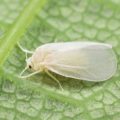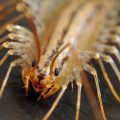Ticks - small size arthropod arachnid, area of distribution is very wide. In our (and close to our) latitudes greatest danger represents wood tick, are vectors of serious infectious diseases, such, as a hemorrhagic fever, ʙorrelioz (Lyme disease) and tick-borne encephalitis. For this reason, forest mite has the second name of "Tick-borne Encephalitis".
In nature ticks are found on low bushes and in the grass, preferring dark and damp areas of forests and urban parks. The most active are mites in April-May, and a decrease in their activity is observed by end-June.
Should not be considered, that if the people were attacked by the tick, they would certainly be ill. However, not to be taken to dealing with these unpleasant creatures too lightly, because of illness, they carry, in some cases can lead to disability and even death. especially if, when a person does not receive timely treatment due.
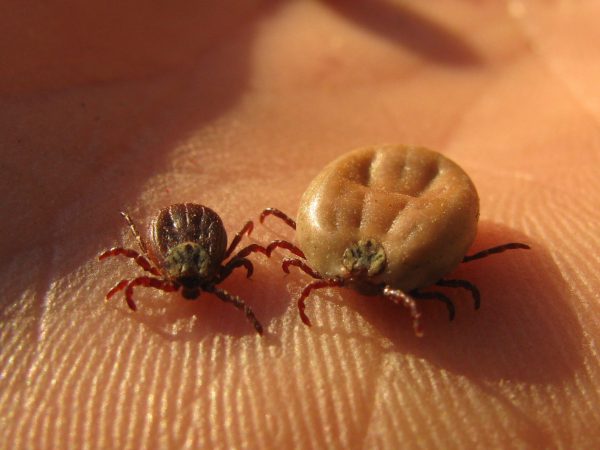
As they attack
According to statistical data, in recent years the number of cases has increased considerably ailments listed above. But, Alas, no outward sign does not allow us to distinguish the tick vector of the "pure" arthropod. and this, and other mites will look exactly the same. Learn, whether the tick bite transmits the disease, possible only under medical laboratory.
However, some symptoms after a tick bite a person sometimes arise, but we'll talk about a little later.
By itself, the tick - being sedentary, he awaits future victim on a bush or grass. As we approach the warm-blooded animal, and to whom a person applies, tick rastopyrivat feet and at the time of closest proximity to the target tends to creep onto the body of a mammal.
People often try to crawl a tick and a foothold in the neck, shoulders, head, armpits, groin and other areas with thin skin, and the most close position of the blood vessel (cm. a photo).
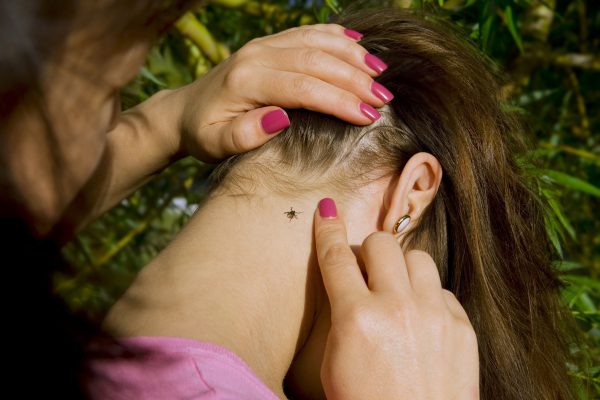
note! When they bite a person does not feel pain, as the tick saliva allocates to bite anesthetic and begins to quietly absorb the blood of an unsuspecting person or animal through the proboscis-gipostom, equipped with sharp teeth.
Symptoms of a bite
Primary symptoms of tick bite may occur after two or three hours after its attachment.
so, what symptoms may appear in person?
- Weakness;
- fatiguability;
- feeling aches in joints and muscles;
- fever;
- lowering blood pressure;
- tachycardia over 60 u. / min;
- rash, itchy skin;
- enlarged regional lymph nodes.
More severe symptoms, expressed in the form of intense headaches, nausea with vomiting, shortness of breath and wheezing, hallucinatory syndrome, as well as symptoms of a greater intensity of the above, usually, observed in individuals following categories:
- attacked several ticks;
- underweight;
- elderly and children's age;
- suffering from various forms of immunodeficiencies;
- having chronic diseases (particularly in the acute stage);
- with a history of allergies.
What to do
Find a tick on your body in the cellar. Externally, it will remind the bulk mole with hairs (foot mite).
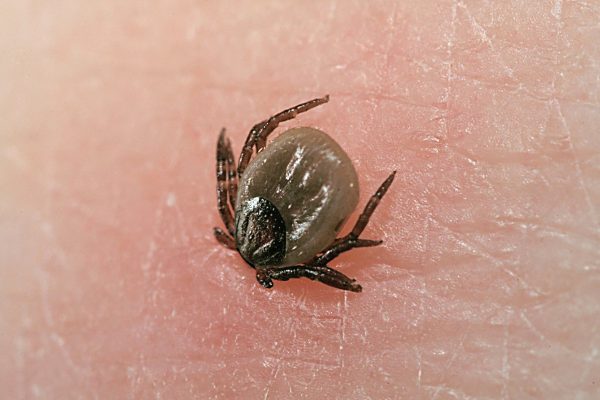
Intruder can be quite long on the body in the state have stuck. If you find yourself on the body of the tick, and can not as soon as possible to seek assistance in the health facility, you need to extract it yourself.
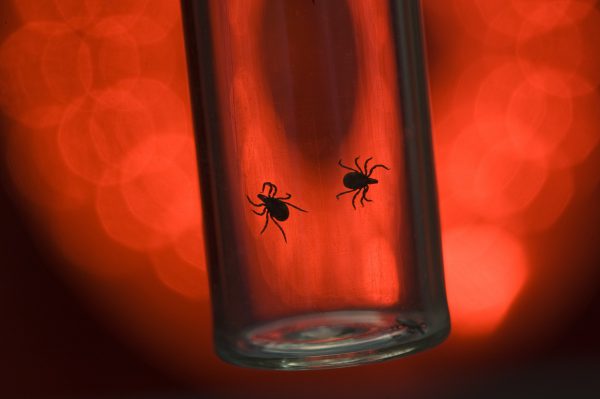
This procedure is absolutely painless. Wrap your fingers with gauze or a clean cloth or wear protective gloves. Gently shake the mite, then gently pull the, while rotating it counterclockwise.
Important! Do not pull the tick with a force, do not pick a sharp object, since you can simply tear it, leaving in the wound head, that almost certainly will cause irritation and suppuration. it, of course, not deadly, but very unpleasant.
Removing the intruder, Treat the bite with iodine and watch. Sometimes in this place there is the small size and the intensity of the pink spot, which disappears in a few days. This is a normal reaction of the body, and you should not worry.
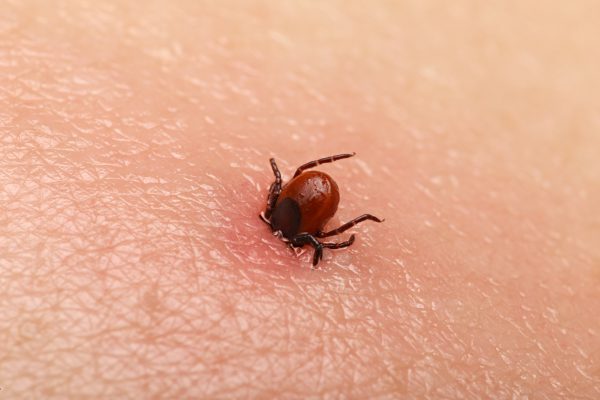
note! Many sources contain advice to remove the tick using oils. should not do! Oil blocking oxygen intake mite, and at this moment "panicked" arthropod can throw into the wound the contents of his intestines with an infectious agent, if such is the place to be. of course, probability of infection in this case, increases several times.
Extracted tick is strongly recommended to hand over to a specialized laboratory for the study on the presence in it of infectious diseases.
If you decide not to go to the doctor, but later noticed an increase in the spot size at the site of the bite, skin rash or other signs of illness, necessarily go to the reception to the skilled. Timely access to a doctor will help you avoid the worst effects of the disease possible.

What threatens the tick bite
As I mentioned above, Each tick is not a carrier of diseases. However, the sooner you remove it, the less you will be able to catch one of these illnesses:
- tick borne encephalitis. It is a viral disease, symptoms which includes general toxicity, increased body temperature, CNS as meningitis and encephalitis.
The consequences of the disease, developing after a tick bite, They include the appearance of a person so severe neurological changes, that they can not only lead to disability, but even to the death of the patient.
Primary symptoms of the disease appear, usually, through 7 – 10 days after the bite.
Specific medical preventive administration is carried out using the immunoglobulin within, than three days after the bite.
- Lyme disease or Lyme disease. It is a bacterial infection, wherein the symptomatology is very wide spectrum shows various manifestations. specific symptoms, allows to differentiate Lyme disease from other diseases, are migrating skin rashes. other, borreliosis nonspecific symptoms include symptoms of intoxication, hyperthermia, headache, fatiguability.
During the disease occurs musculoskeletal defeat, cardiovascular and nervous systems of human.
The most severe lesions are observed in those people, who have a genetic predisposition to damage any of the following "target systems".
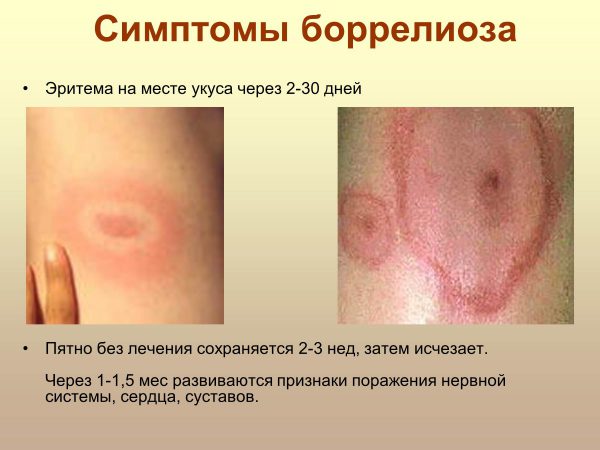
Without the intervention of a physician in the course of the disease, it can lead to the patient's disability.
- hemorrhagic fever, is divided into two versions of "Crimean-Congo" and "Omsk". It is a viral disease, characterized by symptoms of intoxication; increase in temperature; fever; hemorrhages in the parenchyma of internal organs, under the skin and mucous membranes, in particular - the eye.
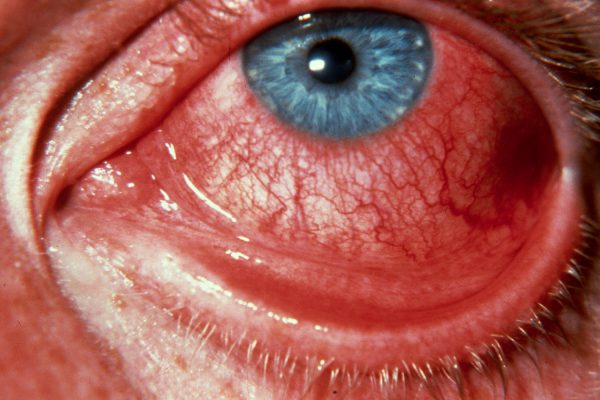
In the treatment of used anti-viral drugs, dropper with glucose and vitamins (TO, R), which are intended to strengthen the vascular stenki.Prognoz for recovery, generally, favorable, but only if, if the patient is time to consult specialists.
preventive measures
- First of all we must try to protect themselves from possible attack tick.
- In most of their activity period, try to defend themselves with the help of clothes, For our little "friends" may be attached only to exposed skin. Be particularly careful to protect your feet, Take care of a tight fit clothes to the body at the ankles, wrists, neck. This is necessary in order, to tick could not crawl to you under your clothes.
- Try to choose for a walk or hike lighter clothes, make it easier to find crawling on her mite.
- Apply dust mite repellent, paying particular attention to the collar, zone, sleeves and cuffs, headwear, socks and lower leg.
- Carefully and regularly carry out itself- and vzaimoosmotry after visiting forests, parks, meadows and other favorite places for mites living. You can find a tick, crawling on your clothing or body to the point, he will have time to attach.
- If you are walking their pets in the areas of potential habitat of ticks - must inspect them after the walk, even if, If your animal is processed. Do not neglect the monthly processing of animal by special means against ticks. After all, your four-legged friend can not only bring on himself intruder, but also become a victim of its own.
- If you are still found on the body of the tick, refer to the infectious diseases doctor for the prevention of the possible consequences of the bite.
- As preventive measures for early prevention of encephalitis immunization is conducted in medical institutions, but, this issue should be puzzled long before the onset of increased activity of ticks season. On this occasion, you consult your regional infectious department.









